Rivers are a harsh place for paddle boards. Unless you surf an inflatable board, you probably have gotten a few dings. In my experience, there are a handful of ways that you’ll do serious damage to your board. I won’t go into detail on the obvious ones: dropping your board, forgetting to strap it to the roof rack, neglecting to attach your leash, etc (all which I have done by the way). I will go over some of the less obvious, but extremely common ways you can damage your board while surfing river waves.
Pearling and sticking to the bottom
Anyone who has surfed river waves at low water will know this issue. The nose of your board will go underwater, often causing you to fall off. Occasionally the board will sink all the way to the bottom of the river, and stick there pinned by the water rushing over it. Usually a tug on your leash will free the board, but not until after the nose has been dragged over whatever sharp rocks make up the river bottom. The result can be huge dings on the bottom of your board near the nose. Longer, flatter, and low nose volume boards are more susceptible to having this happen.
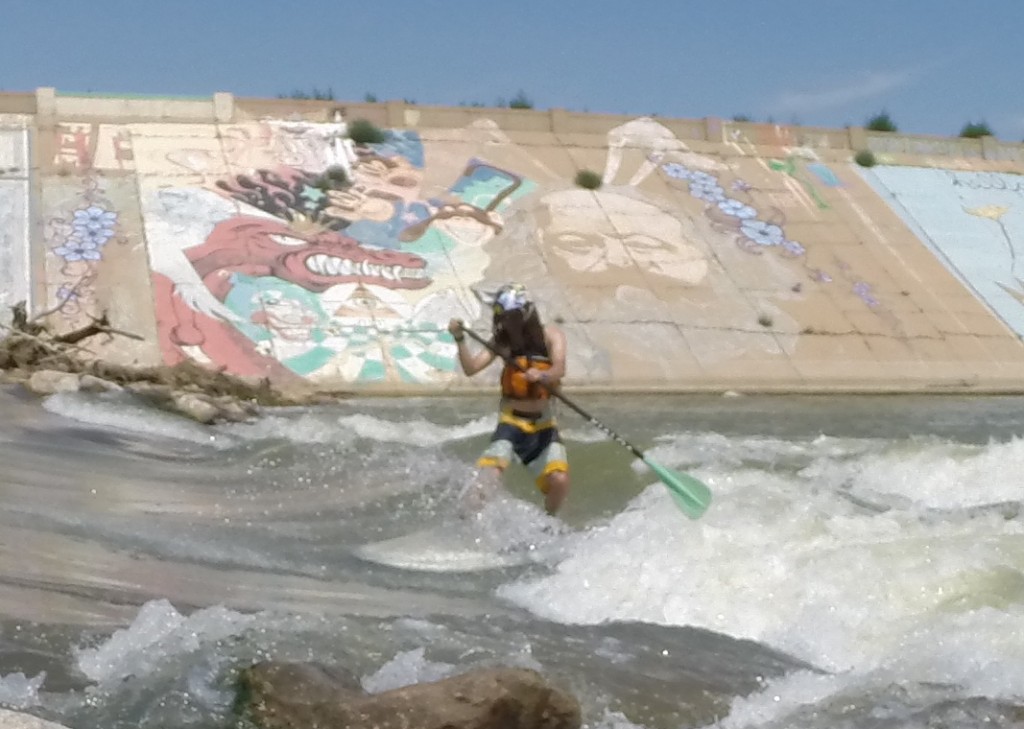
About to pearl my Starboard Impossible at Pueblo’s 3rd Wave
To avoid having your board pearl and stick, all you need to do is weight you back foot as much and as quickly as possible when your board starts to pearl. Putting all your weight on your back foot will bring your nose back up before it hits the bottom of the river. This will almost always cause you to get kicked off the wave, but in my opinion that’s better than getting huge dings.
Another more advanced approach to avoid pearling is to keep your board on an edge. Pearls most often happen when your board is pointed directly up river and is flat. If you continuously make turns and keep your board on one rail or another, you will drastically reduce your number of pearls. Forcing your board onto one rail and into a turn may also help you recover from a pearl.
Whale breaching
A weird but common ding to see on river boards on the top of the nose or rails. Unless you surf your board deck pad down, this ding is caused by having the board shoot out from under you and flip over… which looks like a whale breaching.
If you fall off the back of your board slowly, you’ll likely cause the tail to sink, then the entire board to rocket out of the water, flip over, and potentially land upside down on a rock. This gives you your oddly placed dings. Short, thick boards surfed on small steep holes, are more likely to get this kind of ding.
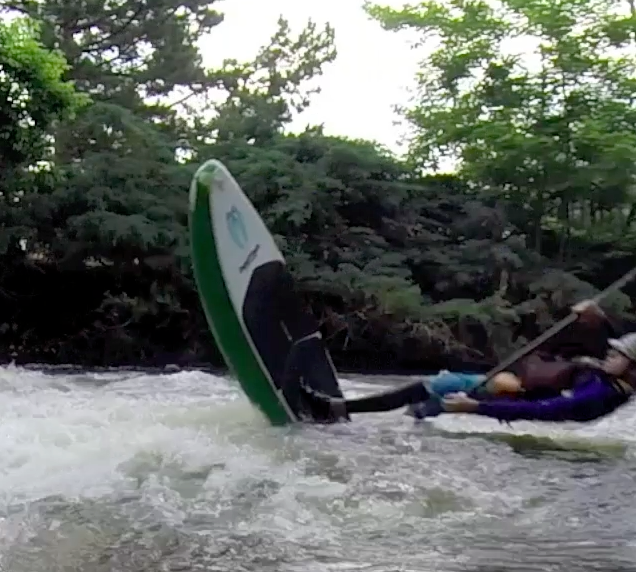
Bodhi Harrison falling off the back of his Badfish River Surfer, you can see he has a nose ding
To avoid having this happen to you, get good at your back brace. Avoid dramatic falls off the back of your board. Dropping to your knees is also a great way to avoid falling, and it shifts your weight forward on your board to keep it from shooting or from under you.
Grinding fins in the eddy
This might seem like a no-brainer, but I’ve seen a lot of FCS fin plugs destroyed. Jumping on your board in the eddy where it’s too shallow will grind your fins into the rocks below. Fin plugs are much harder to repair compared to other dings, so this is worth avoiding.
I keep my fins from hitting rocks by not getting on my board if it’s shallower than knee deep. If it’s too shallow, I walk forward in the eddy until I find a spot where it gets deep enough. Often times I’ll find a drop off in the water. I stand on the shallow part of the drop off, place my board over the deep part, and jump on my board when I’m ready to paddle onto the wave. This usually gives me a clear shot of deep water to paddle before I hit the wave.
Your fin setup will also help. Using flexible fins, like FSC M5 Softflexes or Proteck Super Flexes, will bend when hitting rocks.
When using FSC fins, avoid tightening the screws too much. I would rather replace a fin than a whole fin plug. If there is a high likelihood of getting fins caught on rocks, avoid FCS fins altogether. Longboard center fin boxes are MUCH stronger than FSC fin plugs. I’ve destroyed many longboard fins in the river, but I’ve never damaged a longboard fin box.
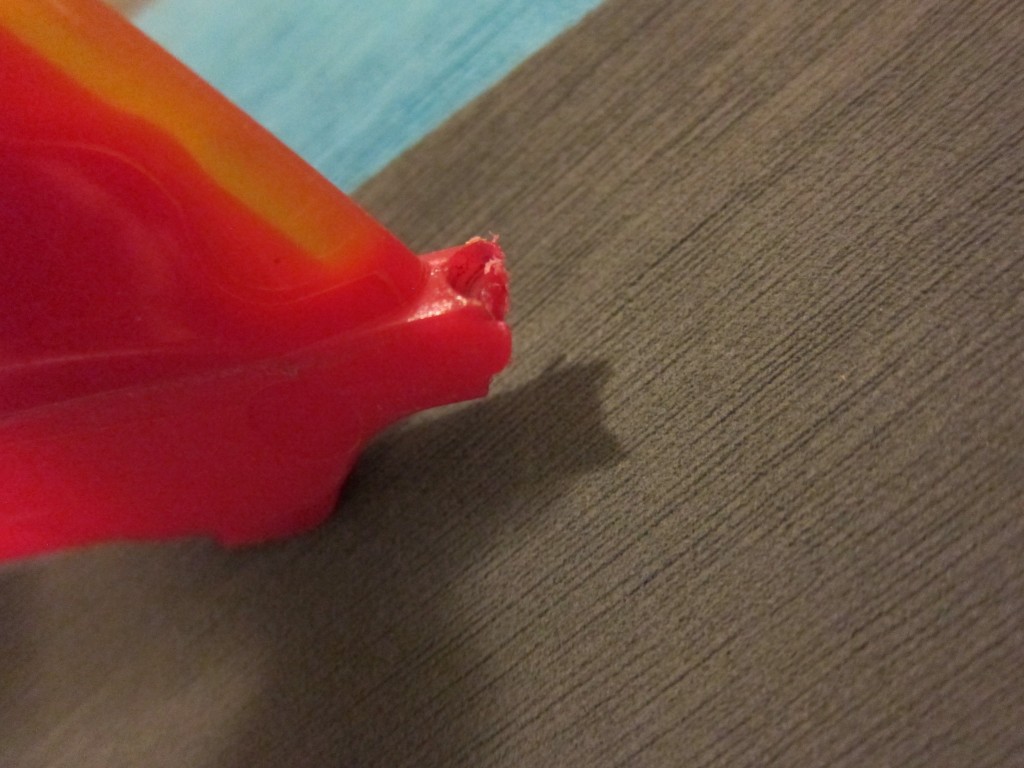
A Proteck Superflex center fin with the front mounting hole broken in half
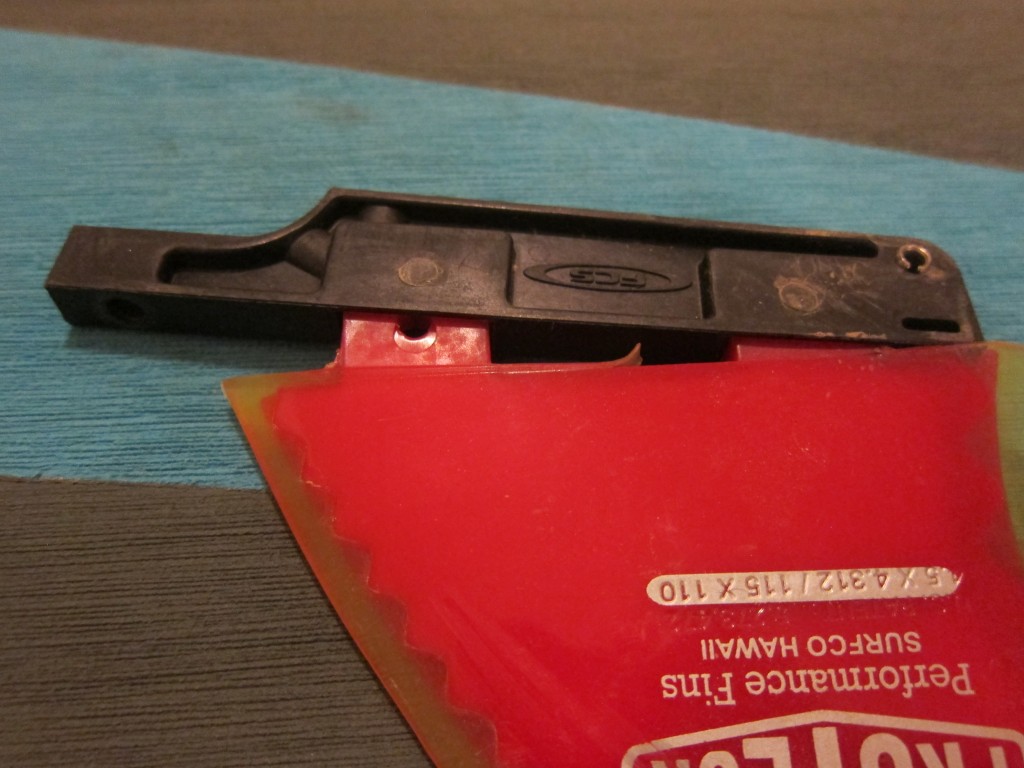
Proteck FCS fin ripped out of a longboard fin box adapter
It’s a shame that river boards don’t go old school and use longboard fin boxes for side bite fins.
Drifting into rocks
This is another obvious one: take care of your board while you make the swim back to the eddy. It’s easy to forget about your board, and have it bang against every rock while you drag it by your leash. Sometimes it’s impossible to avoid, but one thing you can do is use a shorter leash when there’s lots of rocks.
I use a 6 foot Badfish ReLeash whenever I’m surfing at low water.
Normally I prefer a longer leash, but I switch to the shorter leash when I’m worried about rocks.
What ways have you damaged your board? How have you adjusted your surfing to avoid trashing your quiver?

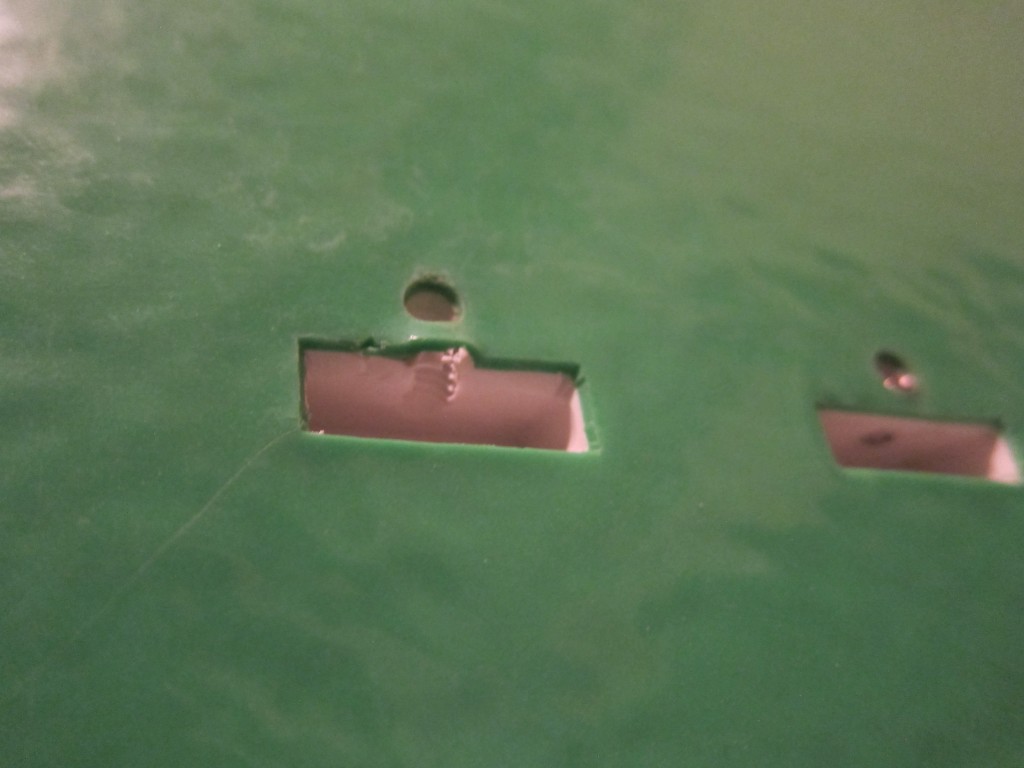
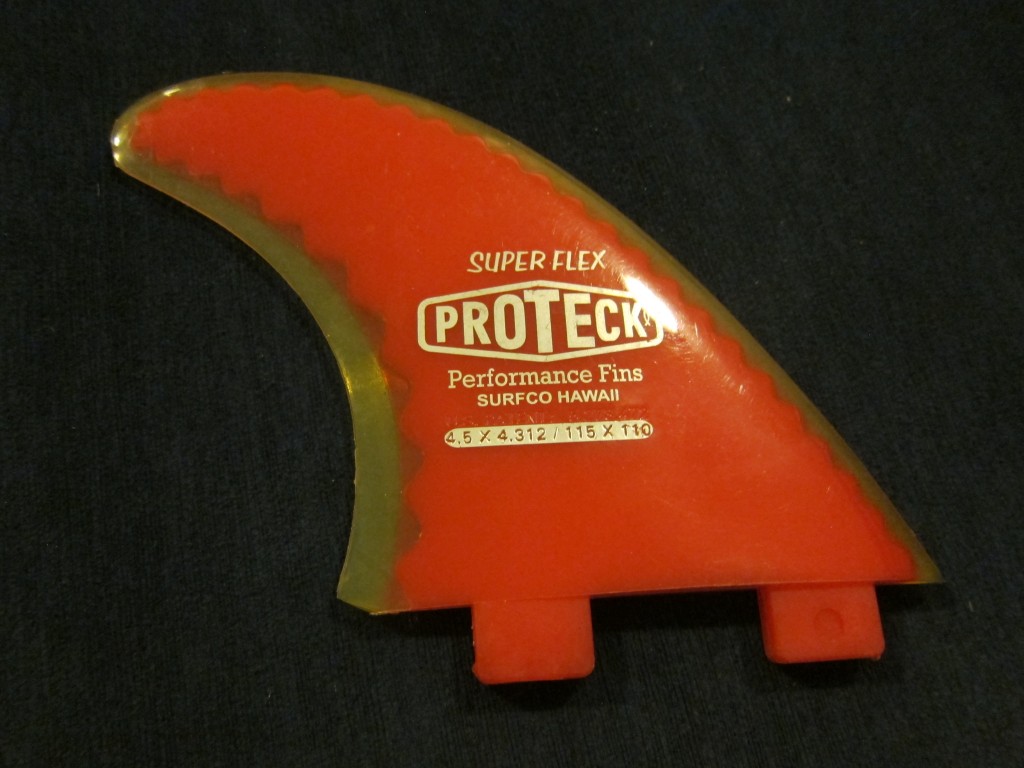
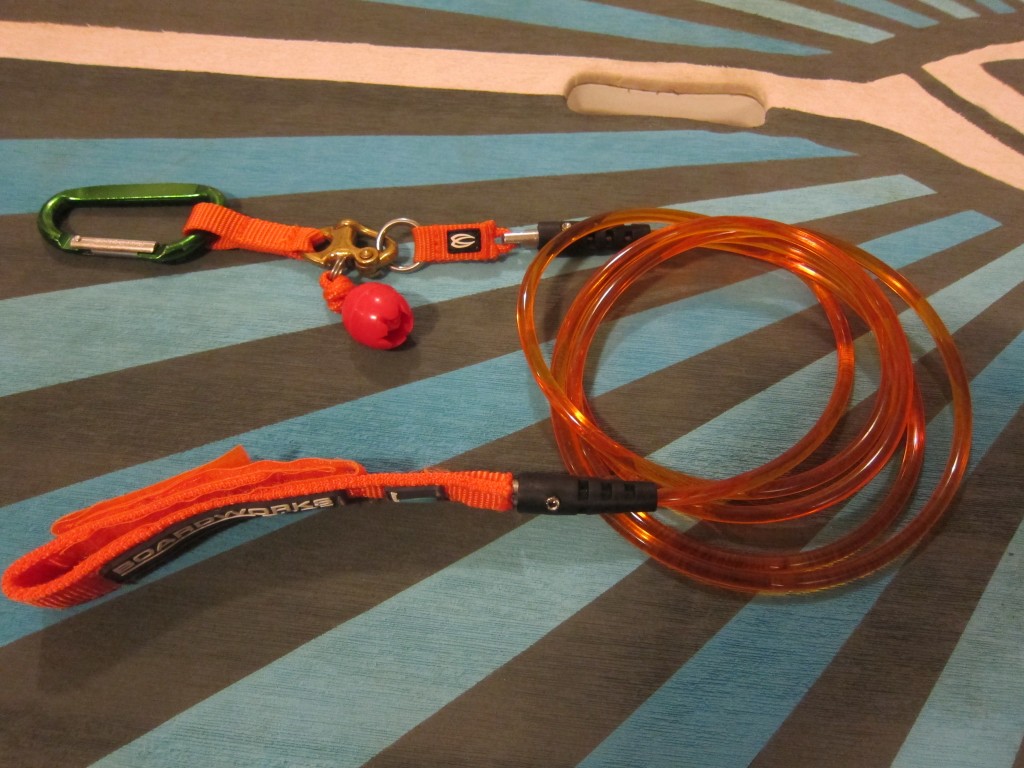
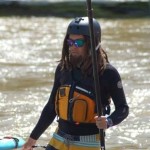
Pingback: Christmas gift ideas for a SUP river surfer - SUP for the Soul